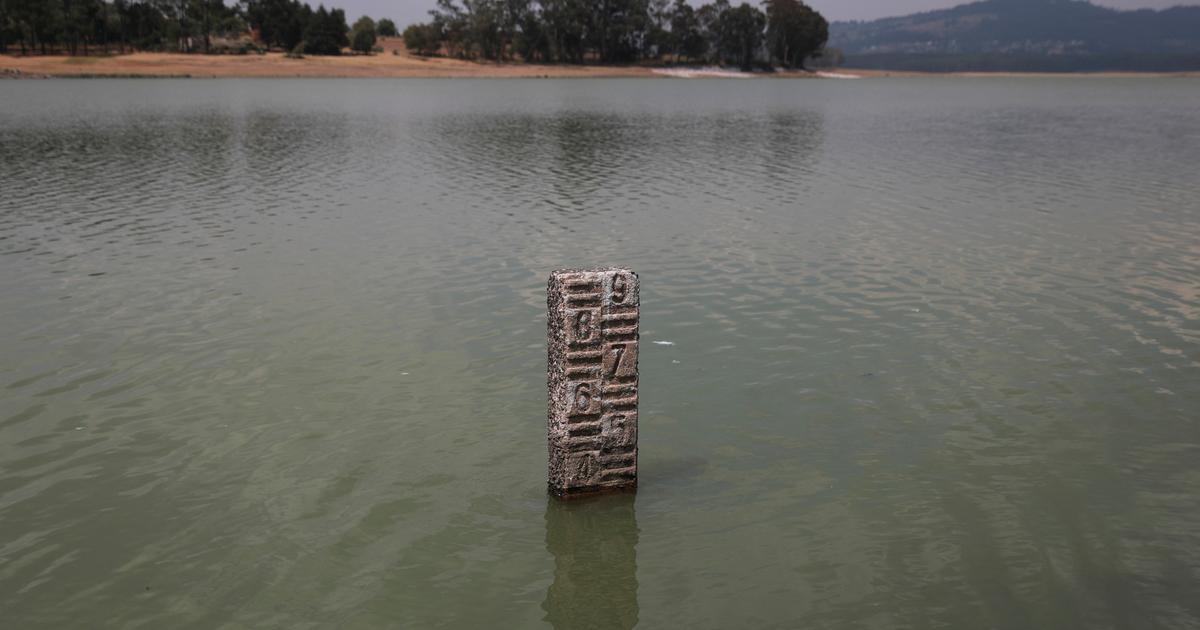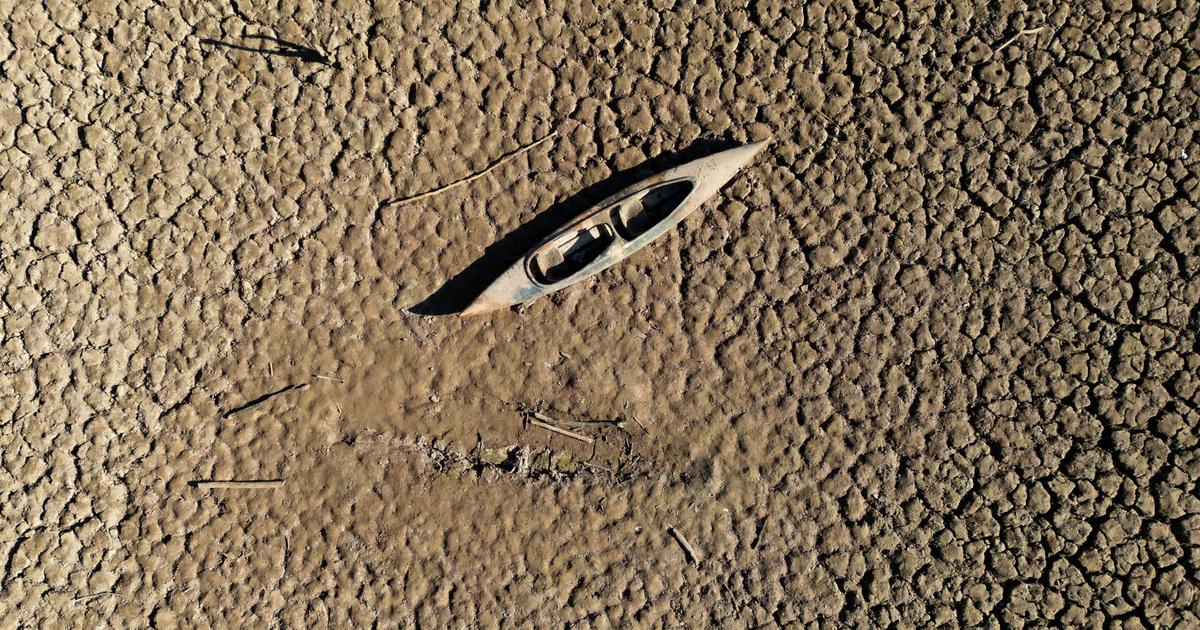While the level of reservoirs continues to fall (and with a large part of the underground reserves in poor condition), the country is increasingly looking towards two other ways of obtaining water resources. 9% of the drinking water that comes out of the country's taps already comes from the sea and a similar percentage of the wastewater from the toilets is treated with a quality that allows watering even lettuce that is going to be eaten, according to data from the Spanish Association of Desalination and Reuse (AEDyR). Spain not only leads the European ranking of the number of large dams built, but also for desalination and reuse of reclaimed water (of higher quality than conventional purified), resources that are more expensive, but have the advantage that they do not decrease with drought.
On the contrary, the forecast is that they will continue to gain prominence in the coming years. If the expansion of some of the large desalination plants was already planned (such as Torrevieja, in Alicante, or Águilas, in Murcia), Royal Decree Law 4/2023 against drought approved last week by the Government with aid for farmers also includes 440 million euros for the construction of three new desalination plants (in Blanes, Girona; in Almeria and Malaga), 600 million to install solar parks in desalination plants already in operation, 180 million for improvements in two treatment plants in Alicante and other measures so that the reuse of reclaimed water grows by 150% by 2027, from the current 400 hm³ to about 1,000 hm³.
Torrevieja desalination plant, in Alicante, the largest in Spain.ALFONSO DURAN
Far ahead in the development of these technologies, there are points in the country – on the peninsular coast and the islands – where these other waters have been strategic for some time. As Domingo Zarzo, president of AEDyR, points out, "if we did not have desalination plants, right now there would be restrictions on supply throughout the Mediterranean coast". As for the use of wastewater, the case of Murcia, which reuses 98% of what comes out of its treatment plants (compared to 9% on average in Spain or 5% in Europe), or the Valencian Community, the European region with the highest volume of reused water (271.54 hm³), is very striking.
These resources can surpass in quality the conventional water that is sometimes used in the country and represent an undoubted relief for arid areas, especially at a critical time like the present. However, some experts warn of the danger of increasing the supply of water resources without also fixing the holes in the system's pipes. In the opinion of Julia Martínez, technical director of the New Water Culture Foundation, "the key to adapting to climate change is to move from supply policies to demand management, which implies reducing water needs in all uses, in human supply, in industries and, especially, in irrigation. that 80% of the water in Spain is being drunk right now." In addition, this biologist argues that reuse does not actually generate any new resources in the system as a whole, because if it is not reused, most of the water from the treatment plants is discharged into the rivers to be diluted. It considers that it does imply a gain when the discharge of a treatment plant into the sea is avoided, but not when the treated water is no longer discharged into a river from which the same cubic meters will continue to be extracted below.
"If we send the message that we are capable of generating an additional resource and that what it does is unleash the demands, what we are doing is launching just the signal that we did not want," says Gonzalo Delacámara, director of the Center for Water and Climate Adaptation at IE University, who believes that the increase in the availability of desalinated and reused water should be accompanied by a reduction in pressure on overexploited aquifers. and natural ecosystems.
General view of the osmosis plant where salt is separated from seawater at the Torrevieja desalination plant.ALFONSO DURAN
After the strong impulse given by the central government between 2004 and 2011, the current desalination capacity in Spain is about five million cubic meters per day, a potential only surpassed in the world by Saudi Arabia, other countries of the Persian Gulf and the United States. According to AEDyR data, in the country there are more than 770 desalination plants with the capacity to generate more than 100 m³/day and one hundred of them of more than 10,000 m³/day. The largest plant is Torrevieja (240,000 m³/day), managed by the state company Acuamed, which is currently operating at full capacity to cover the requests processed by irrigators. Last April, this facility produced 6.7 hm³.
As Zarzo emphasizes, of all the desalinated water right now in the country, 21% is destined to agriculture, which is "a rarity" in the rest of the world (where barely 3% is used for crop irrigation). "Many people come from Australia, Chile or other countries to see here desalination facilities for agriculture and crops irrigated with desalinated water, we are an example worldwide," says the president of AEDyR, who explains that the barrier is no longer technological (because although desalinated water is problematic because it contains boron – a nutrient that can be toxic to some crops). this ensures that Acuamed's large plants are able to remove it), but economic, depending on the crops being profitable enough to pay for this more expensive water.
Although prices can vary greatly, according to Delacámara, a cubic meter of reused water can cost about 35-50 euro cents at the exit of the treatment plant and a cubic meter of desalinated water about 90 cents (not counting transport to the area to be irrigated), while pumping a cubic meter of conventional water in a plot can cost only 10 cents. "Sometimes irrigators prefer to pay less and irrigate their lemons or lettuce with what they pump from an overexploited aquifer, even if it has high levels of salinity or may be contaminated by nitrates," says this economist, who believes that incentives are needed to promote more sustainable irrigation. "If you want to solve not only the problem in the short term, but to guarantee long-term water security in a context of climate adaptation, you need a pricing system that allows more expensive options to enter the market, as was done with renewables to displace fossil fuels," Argues. "Always, of course, that they are really more sustainable, if it is a desalination plant that does not treat its brine [saline waste generated by these facilities], then it is better not to use it."
Biological treatment area of the WWTP of Alguazas, one of the hundred treatment plants in Murcia.
In the case of reuse, the Spanish Association of Water Supply and Sanitation (AEAS) estimates that 61.9% of reclaimed water is used in agriculture, 18% in gardens and leisure areas, 2% in industry, sewer cleaning and street cleaning, and 0.82% in aquifer recharge. Current technology is already capable of purifying toilet water with a quality that is also sufficient to drink it. However, Spanish legislation does not allow it at the moment, which does happen in places like Singapore.
In Murcia, almost all of its 121 hm³ reused per year are dedicated to agriculture. In fact, 15% of all the water that is irrigated in this community comes from the treatment plants, according to Esamur, the public company that is responsible for sanitation in the region. As Pedro Simón, its technical director, explains, although today almost all urban water in the country is purified, that which is going to be reused must go through an added treatment to also eliminate pathogens. This has higher costs than normal purification, which as in the Valencian Community or Catalonia, are covered by a sanitation fee paid by all citizens. The particularity of Murcia is that this treated water with higher quality is now free for farmers, something that may change due to the entry into force in June of a new European regulation that further increases the requirements (and costs) for reuse. "For me the main problem is one of trust," explains Simón about the misgivings that still exist about the use of a resource extracted from wastewater. However, as the technical director of Esamur emphasizes, a well-treated water from a conventional plant that is discharged into rivers can have between 10,000 and 100,000 units of Escherichia coli per 100 milliliters, but the one that is reused right now in Murcia can not exceed 100 units and with the new regulation it has to be lowered to 10.
Aerial view of the tertiary ponds of the Alguazas treatment plant.
"This is a source of water that can be very beneficial and that can serve to protect aquifers, of course at the moment in which we are we can not disdain any," says Simón, who thinks that it would be perfectly viable to use it for the supply of cities if the legislation allowed it. " Water could be regenerated again and again, it would be like a closed circuit, which is what astronauts have. Maybe in the future it will have to be done, today it is better to reuse it in other less committed uses so that it is less expensive, "he says.
Before drinking this water, for Pascual Fernández, president of AEAS, there is still a lot of room to increase its reuse in the country, in other territories and in other sectors. "There is a lot of potential for development in the industry, many industries can work perfectly with recycled water and with this in the end what we are doing is taking pressure off the whole system," he says.
The reservoirs, half empty
The level of reservoirs in Spain fell again this week and water reserves are currently at 27,033 cubic hectometres (hm³), well below the 38,356 hm³ of the average of the last 10 years at this time of year. This is not because works of this type have been destroyed for storage (as a hoax circulating on the internet claims), but because of the prolonged lack of rainfall and increased evaporation due to heat, which reduce the availability of a resource already under great pressure in some areas. With more than a thousand, Spain is still the country with the largest dams in Europe, and has even expanded some to increase its storage capacity; the problem is that many of these infrastructures are now half or almost empty: according to the most up-to-date data from the Ministry for Ecological Transition, at the moment the reservoirs are on average at 48.2% of their capacity. A situation that is expected to get worse in the long run due to global warming.
You can follow CLIMA Y MEDIO AMBIENTE on Facebook and Twitter, or sign up here to receive our weekly newsletter
Subscribe to continue reading
Read without limits
Read more
I'm already a subscriber





/cloudfront-eu-central-1.images.arcpublishing.com/prisa/R65LZW6EVZDNDFZPK25RWRQTVY.jpg)


/cloudfront-eu-central-1.images.arcpublishing.com/prisa/YVHMWL7DMVBDDK33L37HIKIMP4.jpg)
